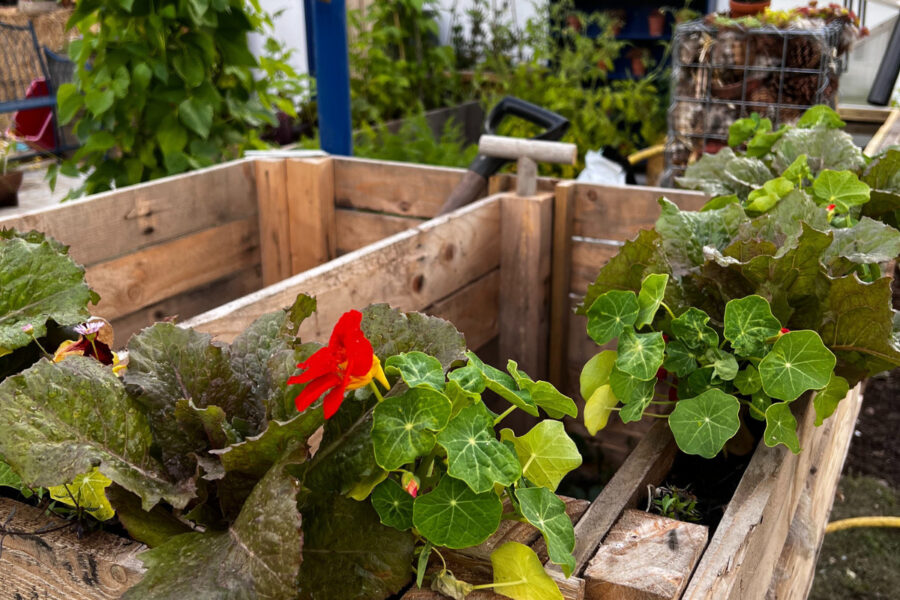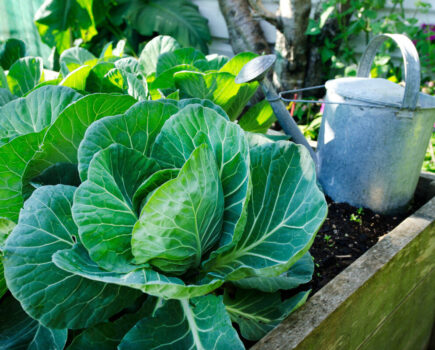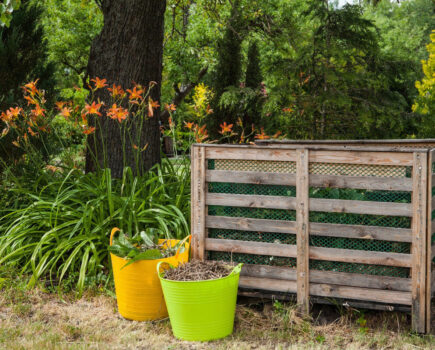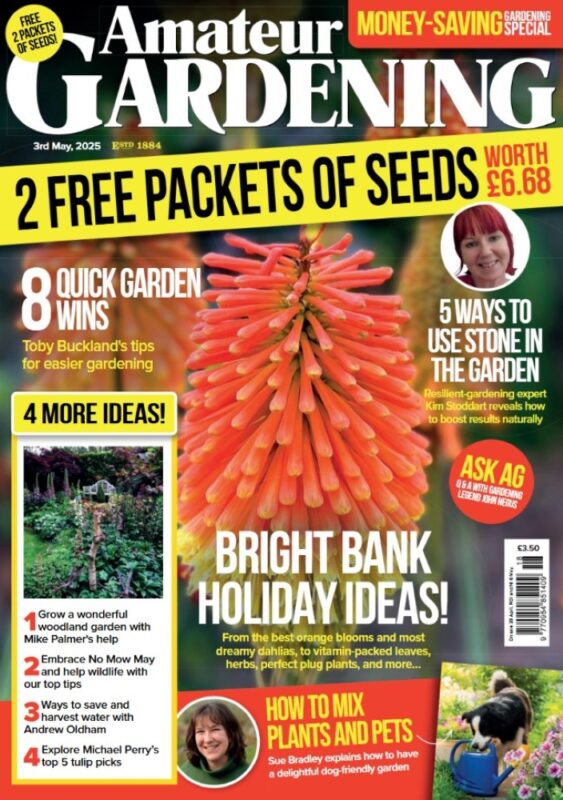Chris Collins explains how to turn old materials into handy design features
Everything is so expensive nowadays, a new-look garden may seem out of reach, but with a little bit of innovation an affordable and creative design is perfectly attainable. Second-hand materials can be inexpensive (or free) and offer an empowering way to upgrade a garden at cut-price.
For inspiration, it’s often good to visit an allotment site. Allotmenteers are the masters at reusing, recycling and generally making the most of what other people consider to be waste materials. Let’s start with the magic of the pallet. Abundantly available, this object has multiple uses as the frame for home-made compost bins, vertical herb planters and furniture. Many gardeners also produce beautiful bug and bee hotels from them, there’s lots of opportunity to get creative.
Second-hand gabions (metal cages used in landscaping) can become wildlife habitats and look pretty stylish as well. Fill with timber, clay pots and organic materials and place among your plants. They can even be used as seating if timber is placed on the top. If space is tight, how about creating the Garden Organic ‘hanging habitat’? Fill two old hanging baskets with straw, twigs and cones and wire them together. They’re perfect for smaller garden wildlife.
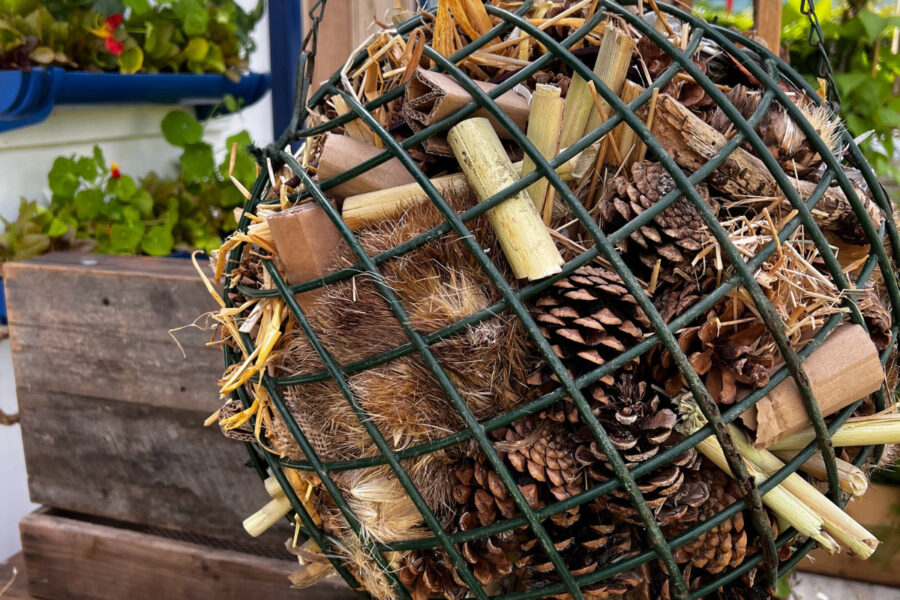
Anything can be a container as long as it has drainage holes: old wellingtons, crates and hessian sacks are easily available. An old pair of jeans, filled with peat-free compost, can be repurposed as a quirky planter. Keep them upright with wooden stakes, and fill with compost. They look great planted up with tumbling tomatoes or bulbs. Old furniture such as chests of drawers – sadly often fly-tipped in my part of the world – can be painted up to make rustic container gardens. Nail the draws open, and drill a few drainage holes before filling with compost and plants.
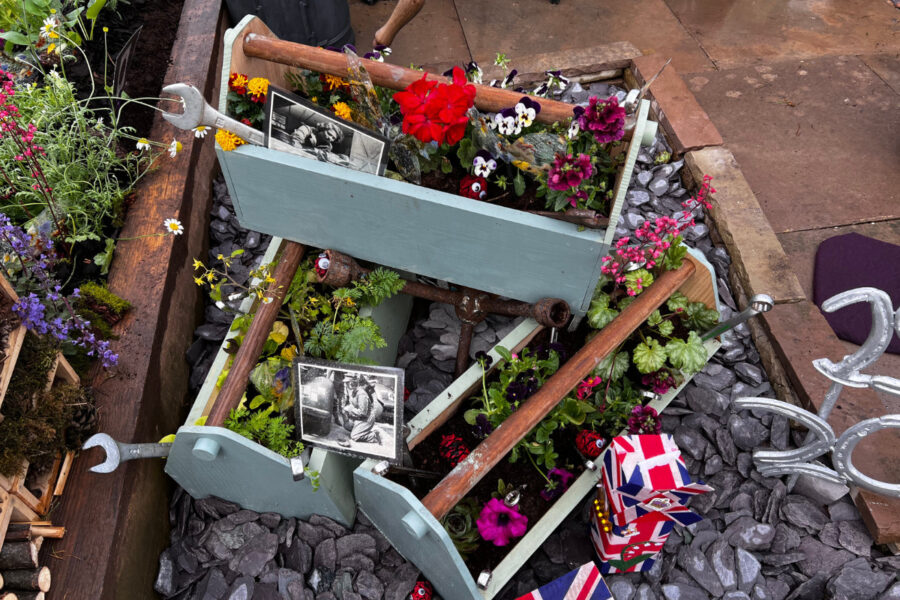
Remember too, that your garden is not flat, it’s a cube, and growing upwards gives you a lot more space. Bolt shelving units to a garden fence or wall, or use old ladders, coppiced wood, or bicycle wheels as grow frames. These items don’t need to look like they’ve been taken from a skip – with a lick of paint and a polish, they can be brought back to life and look lovely.
…….
Small space Q&A
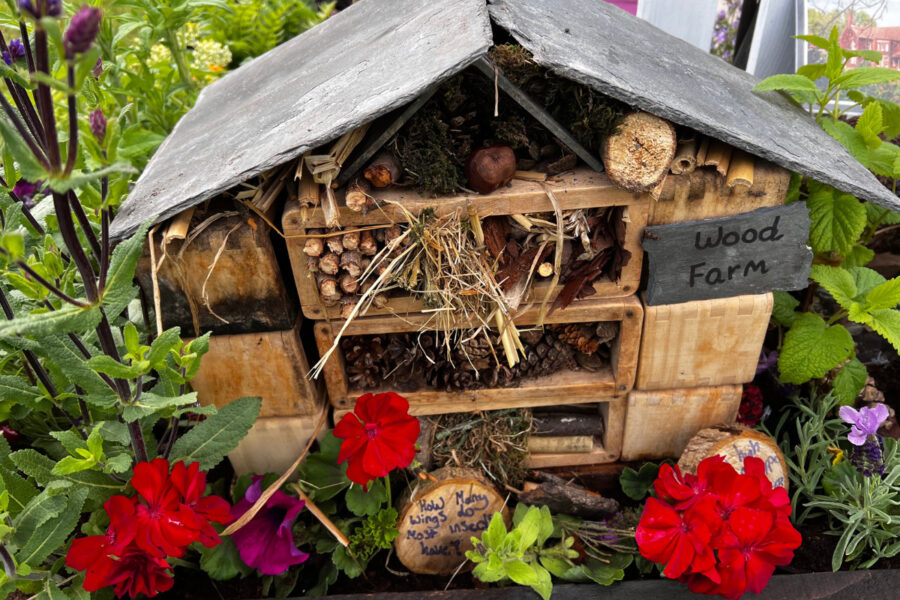
Q. What natural materials can I reuse?
A. Coppiced wood, taken from hornbeam or hazel, are great for creating natural fencing, trellis or used as support for dead hedging – piles of branches and twigs that make perfect habitats for insects and other garden wildlife.
Q. How can I make my own raised bed?
A. Raised beds – which are useful for small areas – can be made from old scaffold boards or untreated sleepers, bought cheaply on the internet. They make great rustic features, and useful spaces to plant up veg or herbs close to the kitchen door.
Q. What can I recycle to propagate plants?
A. Toilet rolls can be used for beans, egg boxes for chitting potatoes and recycled water bottles can be used as cloches. Mushroom pallets make great homemade propagators – or why not reuse a butcher’s block as a potting bench?
Find more tips, advice and articles like this at the Amateur Gardening website. Subscribe to Amateur Gardening magazine now

